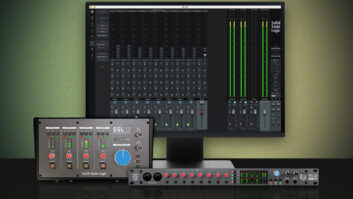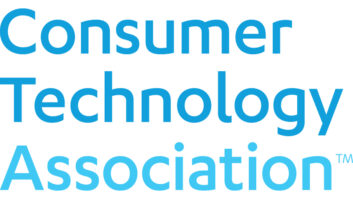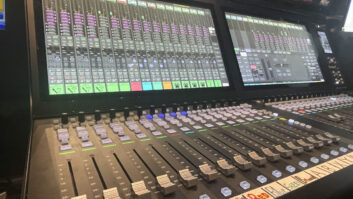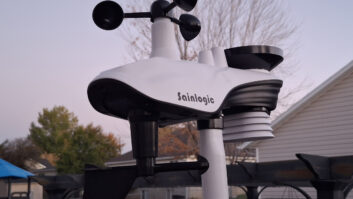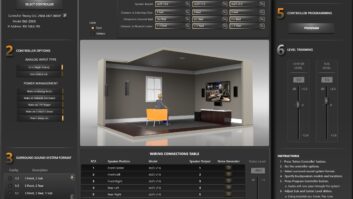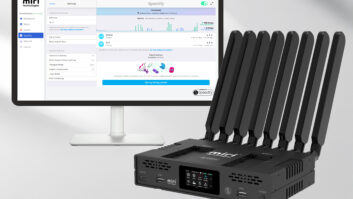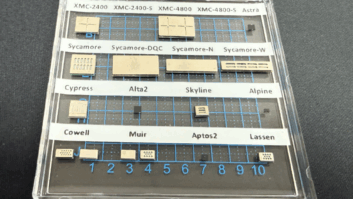San Diego – Consumers could be listening to surround-sound music through MP3 headphone stereos and portable media players (PMPs) sometime next year, according to Thomson and the Fraunhofer Institute.
The two companies have combined their MP3 patents with technology from Lucent spinoff Agere to create MP3 Surround, which differs from matrixed 5.1-channel formats in large part because it delivers 5.1 “psychoacoustically discrete” full-range channels, according to Thomson and Fraunhofer. MP3 Surround also requires only a 10 percent datarate boost to add 3.1-channels to a two-channel stream, they added. Another advantage is backward-compatibility, they said. Unlike other discrete 5.1-channel compressed-audio codecs, MP3 Surround-encoded music can be played in two-channel form through the installed base of millions of two-channel MP3 headphone portables, Thomson added.
As the licensing representative for MP3, Thomson has already begun licensing MP3 Surround, which can be combined with another Fraunhofer technology to deliver 5.1-channel surround through an MP3 portable’s two-driver headphones. Thomson will begin licensing the technology, dubbed Ensonido, at CES 2006 or earlier.
The pairing of MP3 Surround with Ensonido “would be an efficient combination,” Fraunhofer audio marketing director Jan Nordmann said without elaborating. Although “there are still some issues to solve,” Fraunhofer is “optimistic” that headphone portables combining Ensonido and MP3 Surround will appear sometime in 2006, Nordmann added.
Other types of MP3 Surround-equipped consumer electronics will also debut in 2006, although there’s a slight chance the products will appear this year, said Rocky Caldwell, director of technology marketing for Thomson.
Although ship dates will likely slip into 2006, consumers will nonetheless be able to hear MP3 Surround later this year when Web sites begin streaming MP3 Surround files to PCs, Caldwell said. A limited number of download sites might also offer MP3 Surround downloads later this year, he added. Files downloaded from these sites could play back in 5.1 on a PC and in stereo on existing MP3 portables.
The first CE products will likely include home DVD players. DivX Networks, Caldwell noted, recently licensed the format for use in future DivX video downloads, DivX-equipped DVD players, and DivX-equipped portable media players. When applied to video soundtracks or to PC games, MP3 Surround frees up bandwidth for improved video and game performance.
Future PC software will enable ripping of multichannel DVD-Audio discs or the soundtracls of DVD-Video music videos through the “analog hole,” Caldwell added.
DivX, Internet radio stations, and music and video download sites are drawn to MP3 Surround because of its data efficiency and backward compatibility with the installed base of millions of MP3 decoders, Caldwell said. Internet radio services, an MP3 Surround whitepaper explained, “are currently operating under severely constrained bandwidth conditions and, therefore, can offer only mono or stereo content.” MP3 Surround “could extend such mono or stereo services to a full multichannel service within the permissible range of bit-rates.”
To achieve bitrate efficiency, an MP3 Surround file devotes 16kbps to “cue codes” that steer music in the main two-channel stream to any of the speakers in a 5.1-speaker system, Caldwell explained. “The codes tell the channels what they’re supposed to reproduce.” As a result, a 128kbps MP3 Surround file devoting 16kbps to cue codes will deliver 112kbps stereo performance through an MP3 stereo player, he said.
The technology, called Binaural Cue Coding (BCC), isn’t limited to delivering 5.1 channels, nor is it limited to MP3 technology. BCC could be used to deliver more channels, Caldwell said, and it could potentially appear in combination with other compressed-audio codecs. “We don’t expect Agere’s basic patents to be limited to MP3,” Caldwell said.
Thomson expects its 300 existing MP3 licensees to adopt MP3 Surround because “there will be no additional licensing cost for MP3 Surround over MP3,” Caldwell said. Although MP3 Surround will essentially be free to existing MP3 license holders, Thomson expects MP3 Surround to further accelerate its already rising MP3 revenues by attracting new licensees from among the many companies that use MP3 code without authorization. As an open MPEG standard, Caldwell explained, MP3 code is publicly available, but MP3 Surround code is proprietary and will be available only through Thomson, Caldwell said.
Massive adoption of MP3 Surround by MP3 licensees will “put pressure on unlicensed MP3 manufacturers to get an MP3 Surround license,” Caldwell said.
On another topic, Caldwell acknowledged that mp3PRO, introduced about four years ago, has not taken off even though it offers improved sound quality at half the bitrate of traditional MP3. Caldwell cited the rapidly falling cost of bandwidth and storage.




